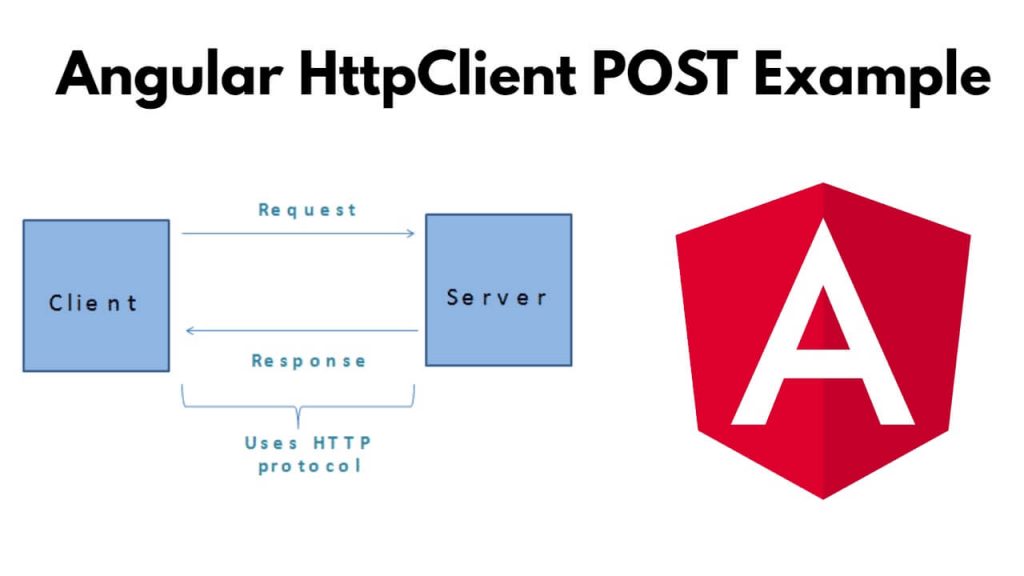To send an HTTP POST request in Angular 17 using HttpClient; Just open app.module.ts typescript file and import the HttpClient module in it and use the httpClient.POST() method to make http post requests to the server in Angular.
Send form data to a server in JSON, text, or any other format from the Angular 17 application using post() method of the HttpClient module. In this guide, we will send form data by making http POST request to server using httpClient.post() method in Angular applications.
Angular HttpClient Post Example
Steps to use HttpClient.post() to perform HTTP POST requests in Angular application:
Step 1: Set up New Angular Project
Start the terminal or cmd and run the ng new myApp --no-standalone command into it to create new angular project; as follows:
ng new myApp --no-standalone
Step 2: Import HttpClientModule
To import HttpClientModule in app.module.ts file, which is in src/app directory; like the following:
import { BrowserModule } from '@angular/platform-browser';
import { NgModule } from '@angular/core';
import { AppComponent } from './app.component';
import { HttpClientModule } from '@angular/common/http';
import { FormsModule } from '@angular/forms';
@NgModule({
declarations: [
AppComponent
],
imports: [
BrowserModule,
FormsModule,
HttpClientModule
],
providers: [],
bootstrap: [AppComponent]
})
export class AppModule { }
Step 3: Create a Service to Send HTTP POST requests
Run ng g s services/post command on cmd or terminal to create service to make http POST requests on server; as follows:
ng g s services/post
Navigate to src/app/services/ folder and send http POST requests on the server from the client side using httpClient.post() method in post.service.ts file; like following:
import { Injectable } from '@angular/core';
import { HttpClient } from '@angular/common/http';
@Injectable({
providedIn: 'root'
})
export class PostService {
private url = 'https://jsonplaceholder.typicode.com/posts';
constructor(private httpClient: HttpClient) { }
createPost(data: any){
return this.httpClient.post(this.url, data);
}
}
Step 4: Use Service in Component
Open app.component.ts from the src/app folder and use a service like following into it to use the HTTPClient.post() method to fetch data from a server via client requests:
import { Component, OnInit } from '@angular/core';
import { PostService } from './services/post.service';
@Component({
selector: 'app-root',
templateUrl: './app.component.html',
styleUrls: ['./app.component.css']
})
export class AppComponent {
postData = {
title: '',
body: ''
};
constructor(private service:PostService) {}
createPost() {
this.service.createPost(this.postData).subscribe(
response => {
console.log('Post created successfully:', response);
alert('Post created successfully');
},
error => {
console.error('Error creating post:', error);
}
);
}
}
Step 5: Show HTTP POST Requests Response
To show httpClient POST request response in html template, simply navigate to the src/app/ folder and open app.component.html and show it like the following:
<h1>Angular httpclient POST Request Example - Tutsmake.com</h1> <form (submit)="createPost()"> <label>Title:</label><br> <input type="text" [(ngModel)]="postData.title" name="title" required><br> <label>Body:</label><br> <textarea [(ngModel)]="postData.body" name="body" required></textarea><br> <button type="submit">Create Post</button> </form>
Step 6: Run Angular App
Run ng serve on cmd or terminal window to start angular app:
ng serve
Open your web browser, and type the given URL into it: as follows:
http://localhost:4200
Conclusion
That’s it; you have learned how to use HttpClient.post() method to make http post request to send data on server in Angular.
